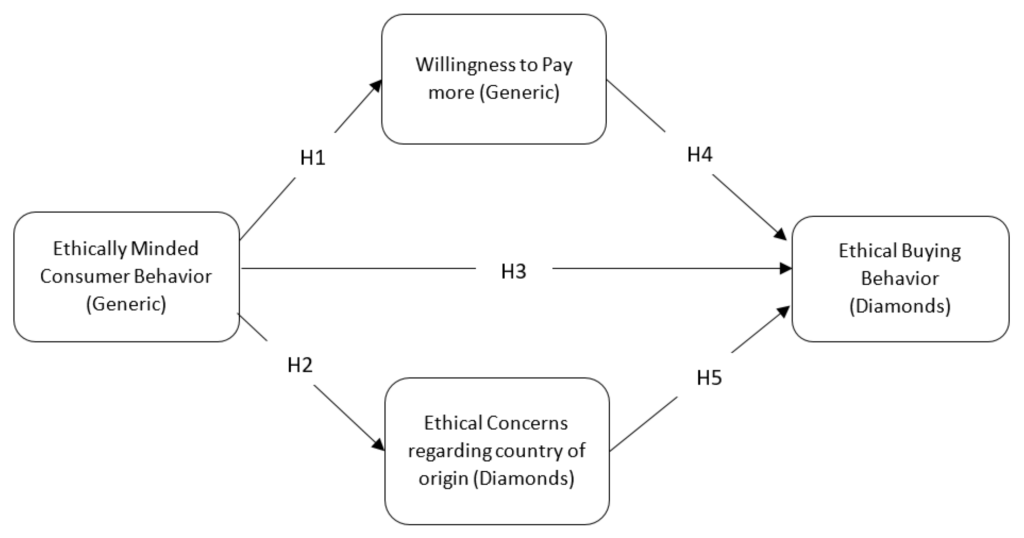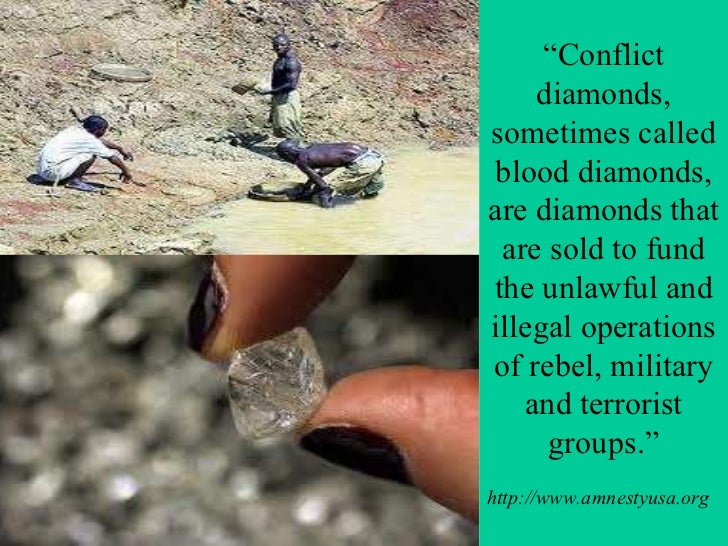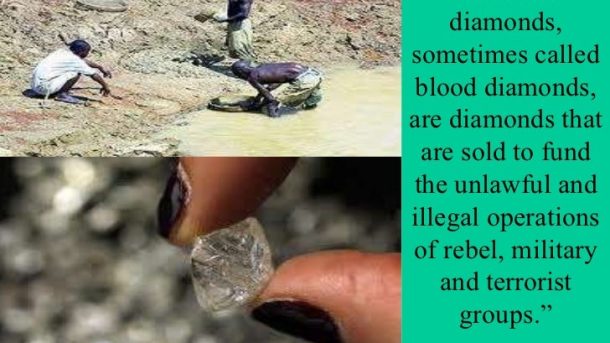This article aims to provide readers with an insightful and comprehensive understanding of the complex relationship between diamonds and sustainability. Here, we take a closer look at the intricate web of ethical considerations surrounding the diamond industry, shedding light on the environmental and societal impact of diamond mining, as well as the efforts made to promote sustainability in this coveted market. Whether you’re a diamond enthusiast or simply curious about the subject, this article will equip you with the knowledge needed to navigate this ethical minefield.
The Origins of Diamonds
Formation of Diamonds
Diamonds are formed deep within the Earth, under intense heat and pressure. They are created when carbon atoms bond together in a unique arrangement. This process takes place at depths of around 150 to 200 kilometers below the Earth’s surface, where temperatures reach over 1,100 degrees Celsius. The carbon atoms are then subjected to immense pressure, caused by the movement of tectonic plates. Over millions of years, this pressure and heat cause the carbon atoms to crystallize, forming diamonds.
Diamond Mining Techniques
Diamond mining techniques vary depending on the location and geological conditions of the deposits. In traditional open-pit mining, large trucks and earthmoving equipment are used to extract diamond-bearing ore from the ground. This method is commonly employed in alluvial deposits, where diamonds are found in riverbeds or the ocean floor.
In contrast, underground mining involves excavating tunnels to reach diamond-bearing kimberlite pipes or volcanic deposits. This method requires specialized equipment and is often more costly and time-consuming than open-pit mining.
Another technique, known as alluvial mining, involves the extraction of diamonds from riverbeds and coastal areas. This method utilizes simple hand-held tools or small-scale machinery to sift through sediment and gravel, separating the diamonds from other minerals.

Diamond Trade Routes
Diamonds are a globally traded commodity, with well-established trade routes and hubs. The major diamond trading centers include Antwerp, Belgium; Mumbai, India; Tel Aviv, Israel; and Dubai, United Arab Emirates. These cities serve as important marketplaces where rough diamonds are bought, sold, and processed into polished gemstones.
The diamond trade routes connect the mining centers, such as Botswana, Russia, and Canada, to the cutting and polishing centers, and eventually to the retail markets around the world. These routes involve a complex network of dealers, wholesalers, and retailers, with transactions often occurring through multiple intermediaries.
Environmental Impact of Diamond Mining
Diamond mining has significant environmental implications, which can impact ecosystems and biodiversity. Here are some key environmental concerns associated with diamond mining:
Deforestation and Habitat Destruction
Diamond mining often requires clearing large areas of land for open-pit or underground operations. This process results in deforestation, leading to the loss of crucial habitats for plants and animals. Deforestation can disrupt ecosystems and cause the displacement or extinction of species.
Water Pollution and Depletion
Mining activities, such as washing ore and extracting diamonds, can lead to the pollution of nearby water sources. Sediment runoff and chemical contaminants from mining operations can endanger aquatic life and contaminate drinking water supplies. Moreover, diamond mining can deplete water sources in arid regions, leading to water scarcity for local communities and ecosystems.
Soil Erosion and Land Degradation
The excavation of diamond-bearing ore can result in extensive soil erosion and land degradation. The removal of topsoil, combined with inadequate reclamation measures, can lead to the loss of fertile land for agriculture and disrupt the natural regeneration of vegetation. Soil erosion can also contribute to increased sedimentation in water bodies, further exacerbating water pollution.
Air Pollution and Carbon Emissions
Mining operations release significant amounts of particulate matter, gases, and dust into the atmosphere. This air pollution contributes to poor air quality, which can have detrimental effects on human health and the surrounding environment. Additionally, diamond mining contributes to carbon emissions through the use of heavy machinery, transportation, and energy-intensive processes, further contributing to climate change.

Human Rights Concerns in the Diamond Industry
The diamond industry has been marred by various human rights abuses and ethical concerns. These issues include:
Forced Labor and Exploitation
In some diamond-producing countries, there have been reports of forced labor and exploitation of miners. Workers are often subjected to dangerous working conditions, long hours, and inadequate pay. Some indigenous communities have also faced displacement due to diamond mining activities, resulting in loss of livelihoods and cultural disruption.
Child Labor and Unsafe Working Conditions
Child labor remains a significant concern in the diamond industry, particularly in countries with weak labor laws and enforcement. Children are often employed in hazardous mining operations, exposing them to physical and psychological risks. Unsafe working conditions, such as lack of protective gear and proper training, further exacerbate the risks faced by child laborers.
Conflict Diamonds and Civil Unrest
Conflict diamonds, also known as blood diamonds, refer to diamonds mined in war zones and sold to finance armed conflicts against governments. The trade-in conflict diamonds has fueled civil unrest and armed conflicts in countries such as Sierra Leone, Angola, and the Democratic Republic of Congo. The profits from conflict diamonds have been used to fund rebel groups, prolonging conflicts and causing immense human suffering.
Worker’s Rights and Fair Compensation
Diamond miners often face challenges in accessing fair wages, safe working conditions, and labor rights. Many miners work in informal or illegal mining operations, where labor standards and protections are lacking. Additionally, the complex nature of the diamond supply chain makes it difficult to trace whether workers involved in mining are receiving fair compensation.
Certification and Ethical Measures
To address ethical concerns and promote sustainability in the diamond industry, various certification schemes and initiatives have been established. These include:
Kimberley Process Certification Scheme
The Kimberley Process Certification Scheme (KPCS) was established in 2003 to prevent conflict diamonds from entering the mainstream diamond market. Participants in the KPCS, including governments, diamond industry representatives, and civil society organizations, are required to implement stringent controls to ensure that diamonds are sourced from conflict-free areas.
Responsible Jewellery Council
The Responsible Jewellery Council (RJC) is a nonprofit organization that sets standards for ethical, social, and environmental practices in the jewelry supply chain. The RJC’s certification process ensures that companies adhere to responsible business practices, including human rights, labor rights, environmental stewardship, and product disclosure.
World Diamond Council
The World Diamond Council (WDC) is an industry organization that aims to promote transparency and integrity in the diamond supply chain. The WDC, in collaboration with governments and civil society, works to prevent conflict diamonds and enhance the ethical and sustainable practices of the diamond industry.
Other Initiatives and Standards
Various other initiatives and standards have been developed to promote ethical practices in the diamond industry. These include voluntary initiatives by jewelry brands and retailers, such as the Responsible Diamond Mining Principles and the No Dirty Gold campaign. Additionally, third-party certification programs like Fairtrade and Fairmined ensure that small-scale miners receive fair prices for their diamonds and adhere to social and environmental standards.

Lab-Grown Diamonds and Sustainability
The emergence of lab-grown diamonds provides an alternative to natural diamonds and offers potential sustainability benefits. Here are some key aspects of lab-grown diamonds:
The Process of Creating Lab-Grown Diamonds
Lab-grown diamonds are produced through a process called chemical vapor deposition (CVD) or high-pressure, high-temperature (HPHT) synthesis. These methods involve replicating the natural conditions under which diamonds are formed but in a controlled laboratory environment. Carbon atoms are deposited onto a diamond seed, gradually building up layers to create a larger diamond.
Environmental Benefits of Lab-Grown Diamonds
Lab-grown diamonds have lower environmental impacts compared to traditional diamond mining. The production of lab-grown diamonds requires less energy and water, reducing the strain on natural resources. Furthermore, lab-grown diamonds eliminate the need for land disturbance and the associated impacts on ecosystems and biodiversity.
Ethical Considerations of Lab-Grown Diamonds
Lab-grown diamonds are considered an ethical choice as they are not associated with the ethical concerns often found in natural diamond mining. They do not contribute to social or environmental issues such as human rights abuses, forced labor, or conflict financing. However, it is important to ensure that the energy sources used for lab-grown diamond production are also sustainable and not reliant on fossil fuels.
The Pros and Cons of Diamond Mining
The diamond mining industry has both positive and negative impacts. Here are some key pros and cons:
Economic Benefits of Diamond Mining
Diamond mining can bring significant economic benefits to countries and local communities. This industry provides job opportunities, infrastructure development, and revenue for governments through taxes and royalties. In some cases, diamond mining has played a crucial role in poverty alleviation and economic growth.
Social and Cultural Influences
Diamonds have a strong cultural and historical significance, symbolizing love, luxury, and status. Diamond mining can contribute to the preservation of cultural heritage and the development of local industries, such as jewelry manufacturing and tourism. Additionally, diamond mining can provide social investment and support community development programs.
Negative Impacts on Local Communities
Despite the economic benefits, diamond mining can have negative impacts on local communities. The extraction of diamonds can lead to the displacement of indigenous communities and the disruption of traditional livelihoods. Moreover, the influx of wealth from diamond mining can lead to social inequality and unequal distribution of benefits within communities.

Sustainable Initiatives in Diamond Mining
To mitigate the environmental and social impacts of diamond mining, various sustainable initiatives have been implemented. These initiatives aim to improve mining practices, support community development, and restore ecosystems affected by mining activities. Here are some key examples:
Improved Mining Techniques
Mining companies are increasingly adopting innovative techniques to minimize environmental impact. This includes the use of advanced technology to reduce energy consumption, water usage, and waste generation. Additionally, companies are implementing responsible mine closure plans to rehabilitate land and restore ecosystems after mining operations cease.
Community Development Programs
Mining companies often implement community development programs to support the social and economic well-being of local communities. These programs may include investments in education, healthcare, infrastructure, and small business development. Engaging with communities and stakeholders is crucial to ensure that the benefits of diamond mining are shared equitably.
Environmental Rehabilitation Efforts
Mining companies are investing in environmental rehabilitation efforts to restore ecosystems and minimize the long-term impacts of mining. This may involve initiatives such as reforestation, habitat restoration, and water management strategies. By restoring ecosystems, mining companies can contribute to biodiversity conservation and ecosystem resilience.
Corporate Social Responsibility
Many mining companies have recognized the importance of corporate social responsibility (CSR) and have integrated sustainability practices into their operations. This may include transparency and disclosure of environmental and social performance, community engagement, and stakeholder collaboration. CSR initiatives help to build trust, enhance reputation, and ensure accountability within the diamond industry.
Consumer Awareness and Responsible Buying
As a consumer, you have the power to make informed choices and support responsible practices in the diamond industry. Here are some important considerations when purchasing diamonds:
Understanding Diamond Supply Chains
It is crucial to understand the diamond supply chain and ensure that the diamonds you purchase are from ethical and sustainable sources. Look for diamonds that are certified by reputable organizations, such as the Kimberley Process Certification Scheme or the Responsible Jewellery Council. These certifications provide assurance that the diamonds are conflict-free and adhere to ethical standards.
Ethical Considerations When Purchasing Diamonds
Consider the social and environmental impact of the diamond you intend to purchase. Ask the jeweler or retailer about the origin of the diamond and inquire about their responsible sourcing practices. Additionally, look for jewelry brands that prioritize sustainable and ethical practices throughout their supply chains.
Alternative Choices for Sustainable Jewelry
Consider alternative options for sustainable jewelry. Lab-grown diamonds, as discussed earlier, offer a more environmentally friendly and ethically conscious choice. Additionally, recycled diamonds or other gemstones can be a sustainable alternative, as they reduce the demand for newly mined stones. Investing in vintage or second-hand jewelry is another way to support sustainability in the industry.
The Role of Government and Legislation
Government policies and legislation play a crucial role in regulating the diamond industry and promoting sustainability. Here are some important aspects:
International Regulations and Agreements
International regulations, such as the Kimberley Process Certification Scheme and other multilateral agreements, aim to prevent the trade of conflict diamonds and ensure the responsible sourcing of diamonds. These regulations require governments, industry stakeholders, and civil society to collaborate and enforce stringent measures to promote ethical practices.
National Laws and Enforcement
Individual countries have enacted laws and regulations to promote ethical and sustainable practices within their diamond industries. These laws may cover areas such as environmental protection, labor rights, and transparency in the supply chain. Effective enforcement of these laws is crucial to hold companies accountable and prevent unethical practices.
Government Incentives and Policies
Governments can incentivize sustainable practices in the diamond industry through policies and financial incentives. This may include tax incentives for environmentally friendly mining practices, support for research and development of innovative technologies, and capacity-building programs for small-scale miners. Government collaboration with industry stakeholders is essential to drive positive change and ensure the longevity of the diamond industry.
Future Trends and Outlook
The diamond industry is constantly evolving, driven by changing consumer preferences, technological advancements, and sustainability concerns. Here are some future trends and outlooks for the diamond industry:
Innovation in the Diamond Industry
Technological advancements have the potential to revolutionize the diamond industry. This includes advancements in lab-grown diamond production, cutting and polishing techniques, and traceability systems. Continuous innovation and investment in research and development will contribute to the sustainability and ethical practices of the industry.
Shift towards Sustainability
There is a growing demand for sustainable and ethically sourced diamonds among consumers. This shift in consumer preferences has led jewelry brands and retailers to prioritize responsible sourcing and environmental stewardship. Increased transparency and traceability in the diamond supply chain will be crucial to meet consumer expectations and ensure the credibility of sustainable claims.
Consumer Preferences and Demand
Consumer awareness and education on ethical and sustainable choices are expected to drive the future of the diamond industry. As consumers become more informed about the environmental and social impacts of diamond mining, they are likely to make purchasing decisions that align with their values. This may include greater demand for lab-grown diamonds, recycled diamonds, and other sustainable alternatives.
In conclusion, the diamond industry faces significant sustainability challenges, including environmental impacts, human rights concerns, and ethical considerations. However, efforts are being made to improve practices and raise standards within the industry. By supporting responsible sourcing, engaging with sustainable initiatives, and making informed buying choices, consumers can contribute to a more sustainable and ethical diamond industry. Similarly, governments, industry stakeholders, and civil society must continue to collaborate and enforce regulations to ensure a more sustainable future for the diamond industry.
© 2022-2023 by diamondstudsource. All rights reserved. No part of this document may be reproduced or transmitted in any form or by any means, electronic, mechanical, photocopying, recording, or otherwise, without prior written permission of diamondstudsource.com.




